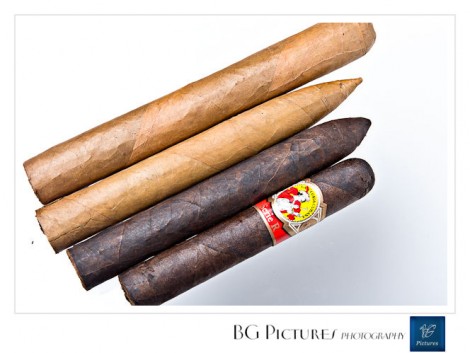
I have read many stories reports and reviews over the years of very dark maduro wrapped cigars being suspect for using dyes for coloring. This is presumably for marketing appeal, the even out the color of a wrapper, to make it more appealing to a consumer. Maybe to play on the myth of the darker cigars being stronger/richer/more expensive that many new smokers believe. In any case, I have not seen any official statement from any manufacturer that they do or do not dye or in some other way artificially color any of their wrappers so everything to this point seems to be people’s opinions.
I have done a couple reviews lately that I stated were dyed wrappers. One in particular was a Habano wrapper, not a maduro, not even a very dark brown color. During the review, very clearly on camera you can see a thick dark build up of a substance on my lips, fingers and all over my shirt. I stated it was dye but now I don’t think it may have been.
I wanted to test a few different shades of wrappers and see what happens when a good amount of moisture is applied, as was during the review conditions of the past few reviews. It has been unusually humid here lately and conditions have been neat or at 100% humidity, certainly unusual conditions for most smokers to be enjoying a cigar in including me. Nevertheless cigars should and mostly do perform fine under these conditions except I seem to find them giving off this color mess.
In this short video I wipe a wet paper towel gently over some different cigars to see what happens.
http://cigarobsession.com/2011/08/10/are-cigars-sometimes-dyed-or-not/